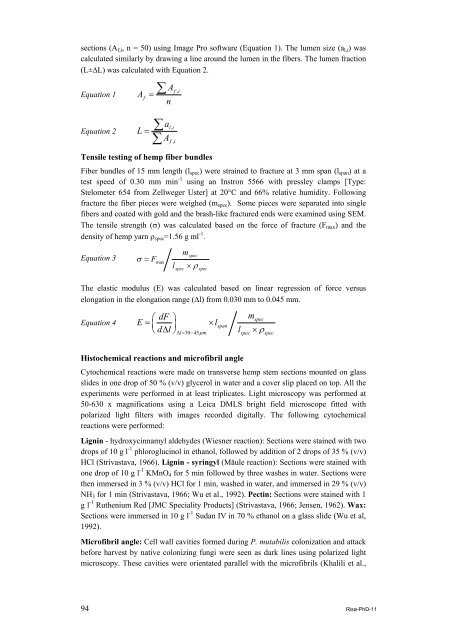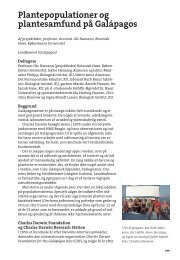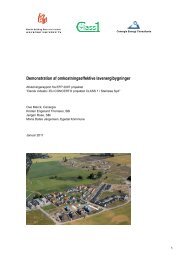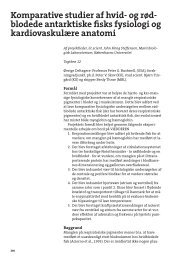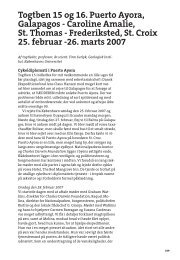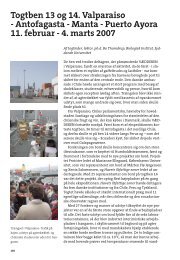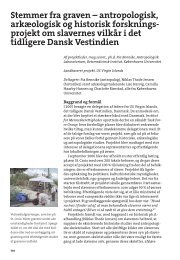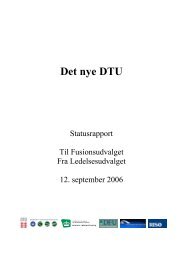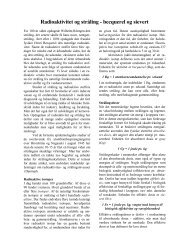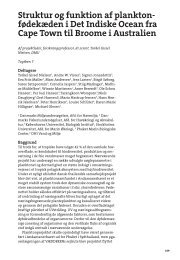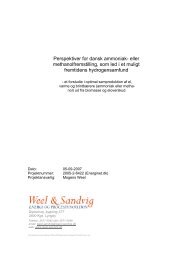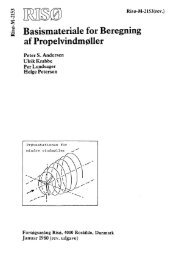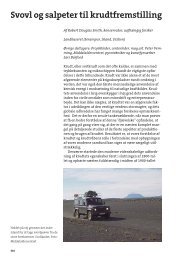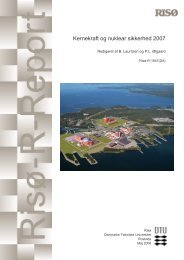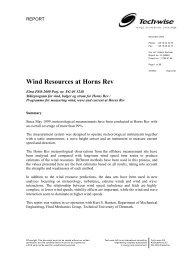Properties of hemp fibre polymer composites -An optimisation of ...
Properties of hemp fibre polymer composites -An optimisation of ...
Properties of hemp fibre polymer composites -An optimisation of ...
Create successful ePaper yourself
Turn your PDF publications into a flip-book with our unique Google optimized e-Paper software.
sections (Af,i, n = 50) using Image Pro s<strong>of</strong>tware (Equation 1). The lumen size (al,i) was<br />
calculated similarly by drawing a line around the lumen in the fibers. The lumen fraction<br />
(L±ΔL) was calculated with Equation 2.<br />
Af<br />
, i<br />
Equation 1 Af<br />
=<br />
n<br />
∑<br />
Equation 2<br />
L =<br />
∑<br />
∑<br />
a<br />
A<br />
l,<br />
i<br />
f , i<br />
Tensile testing <strong>of</strong> <strong>hemp</strong> fiber bundles<br />
Fiber bundles <strong>of</strong> 15 mm length (lspec) were strained to fracture at 3 mm span (lspan) at a<br />
test speed <strong>of</strong> 0.30 mm min -1 using an Instron 5566 with pressley clamps [Type:<br />
Stelometer 654 from Zellweger Uster] at 20°C and 66% relative humidity. Following<br />
fracture the fiber pieces were weighed (mspec). Some pieces were separated into single<br />
fibers and coated with gold and the brash-like fractured ends were examined using SEM.<br />
The tensile strength (σ) was calculated based on the force <strong>of</strong> fracture (Fmax) and the<br />
density <strong>of</strong> <strong>hemp</strong> yarn ρspec=1.56 g ml -1 .<br />
Equation 3<br />
σ<br />
F<br />
= max<br />
l<br />
spec<br />
mspec<br />
× ρ<br />
spec<br />
The elastic modulus (E) was calculated based on linear regression <strong>of</strong> force versus<br />
elongation in the elongation range (Δl) from 0.030 mm to 0.045 mm.<br />
Equation 4<br />
⎛ dF ⎞<br />
m<br />
E = ⎜ ⎟ × l<br />
⎝ dΔ l⎠ l ×<br />
Δ= l 30−45μm span<br />
spec<br />
spec<br />
ρspec<br />
Histochemical reactions and micr<strong>of</strong>ibril angle<br />
Cytochemical reactions were made on transverse <strong>hemp</strong> stem sections mounted on glass<br />
slides in one drop <strong>of</strong> 50 % (v/v) glycerol in water and a cover slip placed on top. All the<br />
experiments were performed in at least triplicates. Light microscopy was performed at<br />
50-630 x magnifications using a Leica DMLS bright field microscope fitted with<br />
polarized light filters with images recorded digitally. The following cytochemical<br />
reactions were performed:<br />
Lignin - hydroxycinnamyl aldehydes (Wiesner reaction): Sections were stained with two<br />
drops <strong>of</strong> 10 g l -1 phloroglucinol in ethanol, followed by addition <strong>of</strong> 2 drops <strong>of</strong> 35 % (v/v)<br />
HCl (Strivastava, 1966). Lignin - syringyl (Mäule reaction): Sections were stained with<br />
one drop <strong>of</strong> 10 g l -1 KMnO4 for 5 min followed by three washes in water. Sections were<br />
then immersed in 3 % (v/v) HCl for 1 min, washed in water, and immersed in 29 % (v/v)<br />
NH3 for 1 min (Strivastava, 1966; Wu et al., 1992). Pectin: Sections were stained with 1<br />
g l -1 Ruthenium Red [JMC Speciality Products] (Strivastava, 1966; Jensen, 1962). Wax:<br />
Sections were immersed in 10 g l -1 Sudan IV in 70 % ethanol on a glass slide (Wu et al,<br />
1992).<br />
Micr<strong>of</strong>ibril angle: Cell wall cavities formed during P. mutabilis colonization and attack<br />
before harvest by native colonizing fungi were seen as dark lines using polarized light<br />
microscopy. These cavities were orientated parallel with the micr<strong>of</strong>ibrils (Khalili et al.,<br />
94 Risø-PhD-11


